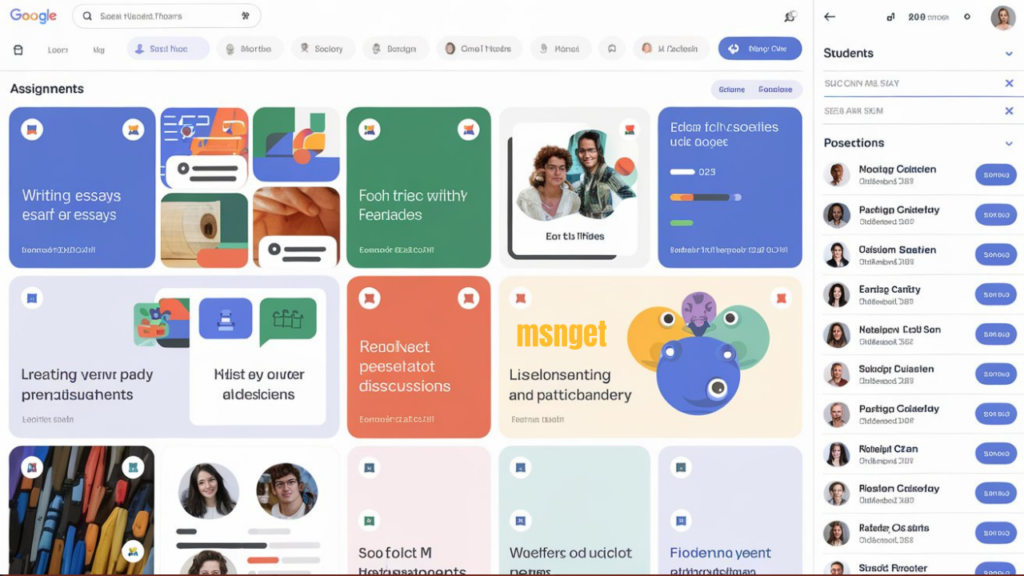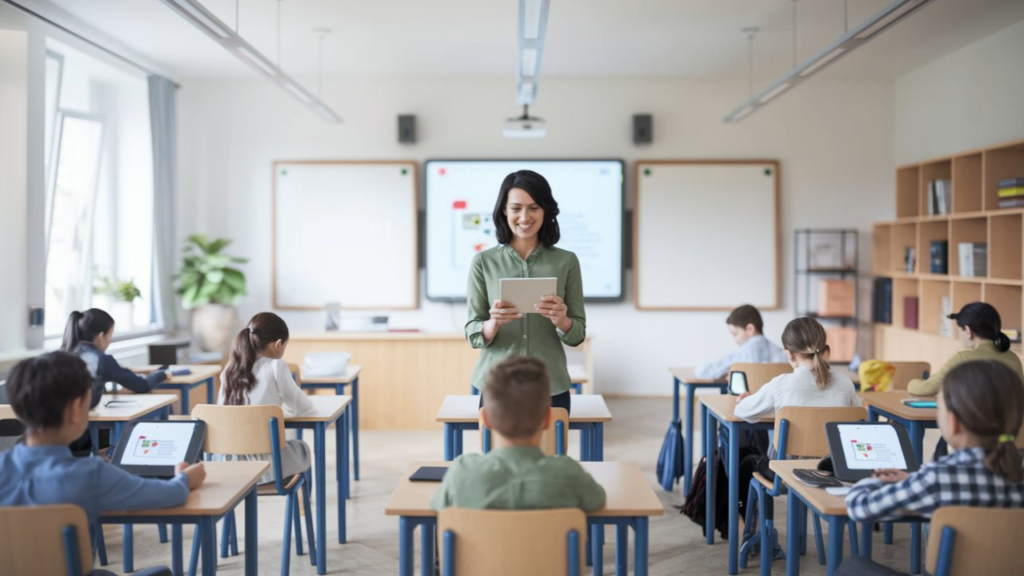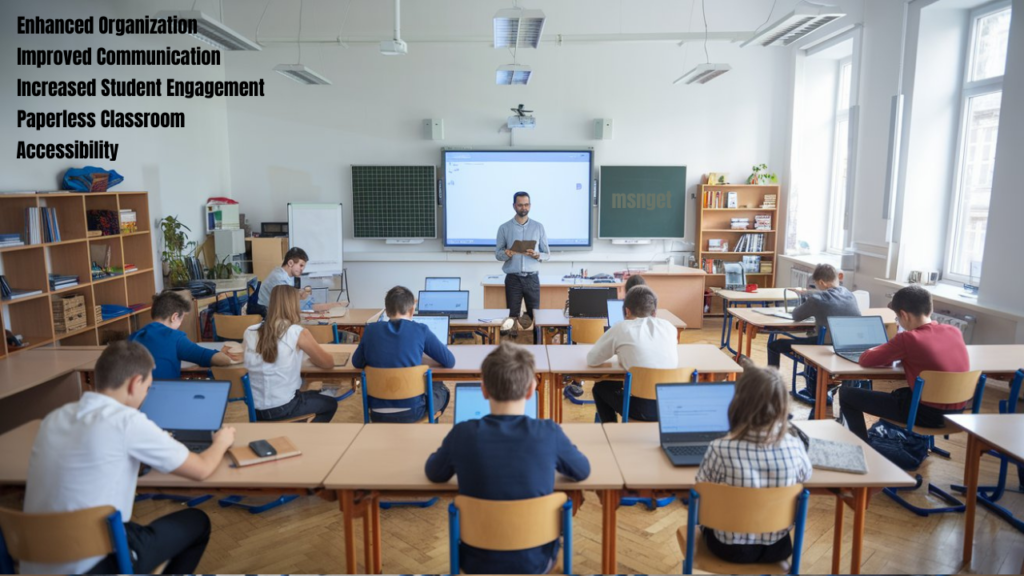

Google Classroom: A Digital Revolution in Education
Google Classroom In today’s rapidly evolving educational landscape, Google Classroom is vital in transforming how teachers and students interact in traditional settings and remote learning environments. This virtual classroom platform enables educators to organize and streamline the educational process, making learning accessible, efficient, and environmentally friendly. Whether you’re a teacher, a student, or a parent, understanding the depth and utility of Google Classroom offers insight into how technology is reshaping education.
What Is Google Classroom?
Google Classroom is a web-based learning management system (LMS) designed by Google to support the educational sector by simplifying assignment management, collaboration, and feedback. It connects students and teachers in a shared space, facilitating learning through organized coursework, interactive assignments, and real-time feedback. The platform is free, and its seamless integration with Google’s suite of tools, such as Google Docs, Sheets, and Slides, makes it a powerful resource for modern education.

Key Features of Google Classroom
The success of Google Classroom lies in its functionality and ease of use. Here are some core features that make it an effective tool for educators:
- Class Creation: Teachers can quickly set up virtual classrooms, invite students, and divide content into topics, creating a streamlined structure for learning.
- Assignment Creation: Google Classroom offers a variety of assignment types, from traditional quizzes and essays to more interactive projects. This flexibility supports a range of learning styles and educational goals.
- File Sharing: With integrated file-sharing capabilities, teachers can upload resources, such as documents, presentations, and videos, providing students with all the tools they need in one place.
- Real-Time Feedback: Teachers can leave comments, offer suggestions, and guide students through their assignments, enhancing the feedback loop and helping students improve.
- Student Work Submission: Students can easily submit assignments through Google Classroom, allowing teachers to grade and provide feedback quickly and efficiently.
- Communication Tools: The platform includes discussion boards and announcements, supporting ongoing conversations, clarifications, and class updates.
- Integration with Google Apps: Google Classroom’s seamless connection with Google Apps facilitates collaborative learning, where students and teachers can work on the same document simultaneously, track edits, and manage tasks efficiently.

Benefits of Google Classroom
What makes Google Classroom invaluable is the array of benefits it brings to the learning experience. Here’s why schools and educators are embracing this tool across various educational contexts:
- Enhanced Organization: Google Classroom allows teachers to keep all course materials, assignments, and grades in one place, helping students stay organized and on track.
- Improved Communication: With features that support discussion and feedback, Google Classroom fosters a continuous dialogue between teachers and students, making it easy for both to stay engaged.
- Increased Student Engagement: Google Classroom provides a dynamic and interactive learning environment that can hold students’ attention more effectively than traditional methods.
- Paperless Classroom: Reducing paper use promotes sustainability, contributing to environmental goals and simplifying document management.
- Accessibility: Accessible from any device with internet, Google Classroom supports learning outside of school hours, making it ideal for a mobile, flexible learning experience.

How Does Google Classroom Support Teachers?
Google Classroom simplifies many aspects of teaching, especially regarding administrative tasks and resource sharing. Teachers can create assignments, grade them, and communicate feedback to students within the platform. The organization tools help teachers track assignments and monitor student progress, enabling a holistic view of each student’s learning journey.
Additionally, Google Classroom saves time. Teachers can focus more on teaching than managing paperwork by eliminating the need to handle physical assignments. The grading system in Google Classroom is also flexible, allowing teachers to set point values, add rubrics, and even automate specific grading tasks. This flexibility makes it easier for educators to give meaningful feedback and monitor performance trends over time.
Also Read: UGG: Cozy Footwear That Redefined Comfort and Style
How Do Students Benefit from Google Classroom?
Students find Google Classroom intuitive and engaging. They can easily access course materials, assignments, and announcements from any device, making staying updated on their work convenient. The platform encourages students to take ownership of their learning by allowing them to see feedback instantly and make improvements. The interactive environment of Google Classroom keeps students engaged, as they can ask questions, participate in discussions, and collaborate with classmates effortlessly.
Is Google Classroom Safe for Students?
With increasing concerns over digital privacy, Google has implemented stringent security features to ensure that Google Classroom is safe for students. Data is encrypted, and teachers control access to content. Schools can also use Google’s suite of administrative tools to manage permissions and safeguard student information, giving parents and educators peace of mind.
Integrating Google Classroom with Traditional Education
Google Classroom offers a perfect balance for schools that blend traditional classroom settings with technology. Teachers can upload lesson plans, assign supplementary materials, and allow students to complete projects online. This integration means students can work independently while staying connected with in-class activities. Hybrid learning, where students spend time both in the Classroom and online, benefits significantly from the structure and accessibility of Google Classroom.
Real-Time Collaboration and Communication
Google Classroom’s interactive features foster collaboration and open communication. In real-time, students can ask questions and get immediate responses from teachers, enhancing their understanding and keeping them actively involved. Group projects are also more manageable since students can collaborate on shared documents, presentations, or spreadsheets within Google Classroom.
Encouraging Environmental Responsibility
A lesser-discussed but significant benefit of Google Classroom is its contribution to an eco-friendly, paperless education system. The platform reduces the need for printed assignments, exams, and handouts, supporting environmentally conscious practices. Schools that adopt Google Classroom align with sustainability efforts and teach students the importance of reducing paper use.
Using Google Classroom for Remote Learning
The global shift towards remote learning has highlighted the importance of flexible, accessible learning tools. Google Classroom meets this need, providing students and teachers with a reliable platform to stay connected. Assignments, exams, and live class sessions can all be organized within the app, making it possible to conduct entire courses remotely. This accessibility ensures that students can continue their education seamlessly, regardless of location.
Challenges and Limitations of Google Classroom
While Google Classroom has transformed education, it has challenges. Teachers may initially need help integrating this new tool, mainly if they need to become more familiar with digital platforms. Navigating Google Classroom can also require additional support for younger students. Another area for improvement is the lack of direct videoconferencing within Google Classroom, which often necessitates using additional platforms like Google Meet. While Google Classroom has addressed these limitations over time, they remain a consideration for schools and educators.
The Future of Google Classroom
With education evolving at an unprecedented rate, Google Classroom will likely continue expanding its features and improving functionality. As more schools integrate technology into their curriculum, Google Classroom will likely adapt to support new teaching strategies and accommodate future educational needs. The future of Google Classroom may include more AI-driven features, advanced analytics to assess student progress, and even greater integration with emerging technologies.
Conclusion
In summary, Google Classroom is more than just an educational tool—it’s a transformative platform that efficiently, engagingly, and eco-friendly connects teachers, students, and resources. It enhances organization, supports communication, and empowers both teachers and students. By embracing Google Classroom, schools can modernize their teaching methods, reduce environmental impact, and create a dynamic learning environment that meets the demands of today’s digital world.
Google Classroom is undoubtedly a step toward the future of education, where learning is accessible, organized, and student-centered. As technology evolves, so will tools like Google Classroom, supporting a new generation of learners ready to thrive in a digital, interconnected world.














